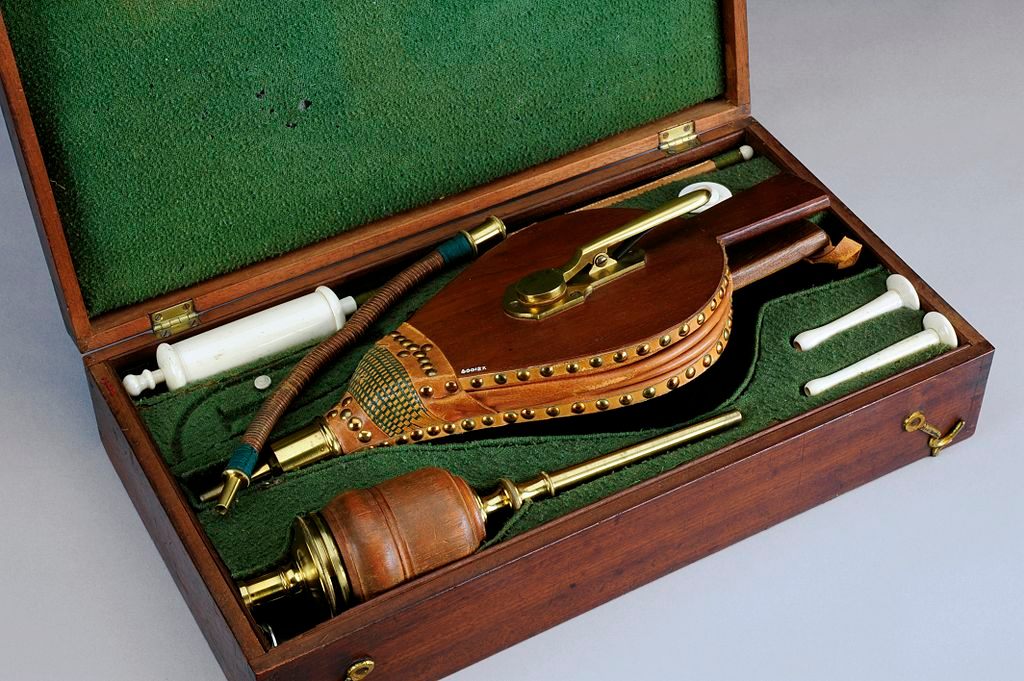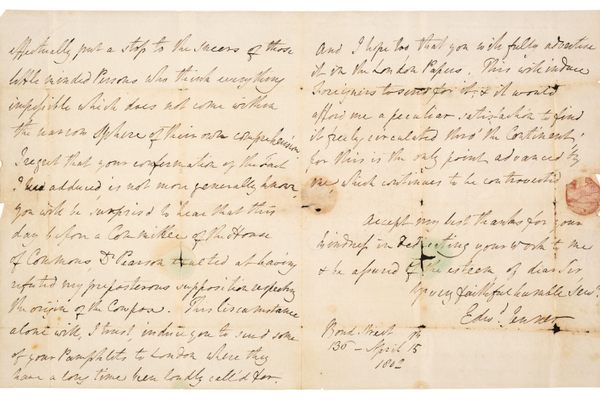Object of Intrigue: London’s Life-Saving, Publicly Accessible Enema Kits

A resuscitation kit from the early 19th century. (Photo: Wellcome Images)
If you were unfortunate enough to drown in London during the mid- to late 18th century, further indignities likely awaited you. A member of the public may have attempted to revive you by furiously pumping tobacco smoke into your rectum.
The tobacco smoke enema was one of the resuscitation techniques recommended by London’s Society for the Recovery of Persons Apparently Drowned, an organization formed in 1774 with the aim of developing and administering lifesaving first-aid to those on death’s door. At the time, resuscitation was still a new and novel concept, and the idea of touching a dead person was thoroughly unappealing to most. To encourage resuscitation attempts, the Society’s founders, doctors William Hawes and Thomas Cogan, offered cash prizes to anyone who could prove they had brought someone back to life.
Cardiopulmonary resuscitation, or CPR, was still centuries away from common usage. Instead of pumping the chest or giving mouth-to-mouth to a drowning victim—a practice that prominent British doctor William Hunter called ”vulgar” in 1776—rescuers employed a variety of other dubious methods when attempting to revive those with waterlogged lungs. Rubbing the skin, inflating the lungs via a tube inserted into the trachea, and bloodletting were among the approaches. The most creative technique, however, was rectal tobacco insufflation—piping smoke into the unconscious person’s intestines via a bellows inserted in the anus.
In its efforts to save people from watery graves, the Society for the Recovery of Persons Apparently Drowned was particularly concerned with the Thames River, the site of many a drowning at a time when few Londoners knew how to swim. During the 1780s, the organization—which had by then been rebranded as the Royal Humane Society—installed resuscitation kits at multiple points along the Thames. These kits included a bellows for administering the tobacco smoke enema.

A bellows from a 1770s Royal Humane Society resuscitation kit. (Photo: Wellcome Images)
If you were out walking by the Thames and happened upon a poor wretch floating face down in the river, you were advised to run to the kit, spark up some tobacco, attach the supplied hose to the bellows, slide said hose into the relevant orifice of the victim, and pump with all your might. Ideally, the warmth and stimulating powers of the tobacco smoke would then bring the vim and vigor back to the seemingly dead person.
A return to life through smoke sounds far-fetched, but apparently the ol’ tobacco enema did work sometimes. British medical journal The Lancet recounts a tale from 1746:
A man’s wife was pulled from the water apparently dead. Amid much conflicting advice, a passing sailor proffered his pipe and instructed the husband to insert the stem into his wife’s rectum, cover the bowl with a piece of perforated paper, and ‘blow hard.’ Miraculously, the woman revived.”
Whether such revivals were occasioned by smoke traveling up the patient’s colon, or whether their recovery was purely coincidental, is up for debate.
























Follow us on Twitter to get the latest on the world's hidden wonders.
Like us on Facebook to get the latest on the world's hidden wonders.
Follow us on Twitter Like us on Facebook